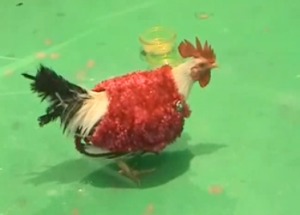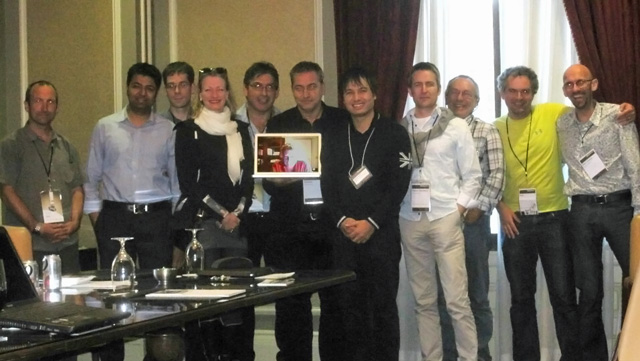Call for Chapters: Hyperconnectivity and the Future of Internet Communication
Proposals Submission Deadline: December 15, 2012
Full Chapters Due: March 15, 2013
Introduction
Over the past few decades, there has been a revolution in computing and communication. Machines that once occupied whole rooms have moved to the desktop, the lap and palm, and into clothing itself. Stand-alone systems are now networked with each other and a wide range of different devices across vast distances. For the first time in human history, we have become instantly globally connected, leading to a hyperconnected society and a 168 (24×7) world.
One of the consequences of this revolution is an explosion in interactive internet media technologies. Interactive media is one of the main developments that emerged as a product of the technological, intellectual, and cultural innovations of the late 20th century. Interactive media means much more than the convergence of telecommunications, traditional media, and computing. Using Marshall McLuhans definition of media as an extension of man, new media includes all the various forms in which we as humans can extend our senses and brains into the world. It includes new technologies that allow us to facilitate these new communications and create natural and humanistic methods of interfacing with machines, as well as other people, remotely over large distances using the full range of human gestures such as touch, sight, sound, and even smell. Thus, new media includes new ways of communication between people, between cultures and races, between humans and machines, and between machines and machines. The vision of new media is that it will bring about radical developments in every aspect of human life in the form of new kinds of symbioses between humans and computers, new ways of communication between people, and new forms of social organization and interaction. New research and products in internet communication will bring a new sense of presence of humans in the real and virtual worlds. Although there are many books related to internet technologies, the aspect of communication with all human senses in a constant hyperconnected manner still requires much scholarly research. This book will be at the forefront of scholarship in multisensory hyperconnected human communication and be of great resource to scholars and experts.
Objective of the Book
This book will examine and expose future internet communication technologies and telexistence paradigms to allow a hyperconnected presence of all our five senses, as well as non-verbal and emotional communication, through digital networks and the physical world of humans and devices/gadgets. It will examine the human communication habits and preferences in the internet age and the possibilities of new media being truly extensions of man. Researchers need to go beyond this approach and focus on human emotions and nonverbal language as key components in the communication process. Case studies will examine corresponding new forms of communication, culture, economy and business, healthcare, learning, and play.
Target Audience
In order for businesses and countries to flourish commercially and culturally in the new millennium, it is necessary for them to understand and foster the growth of interactive media technologies and open-minded creative experimentations. This book will provide new perspectives on the field of internet media for communication, learning, and entertainment. The potential audience of this book will be scientists, engineers, and researchers of internet and digital media communications. In addition, the proposed book will aid the prospective audience, e.g. university lecturers and professors, students, researchers, and developers of internet technologies. It will allow a fundamental understanding of hyperconnectivity with all human senses, and will provide a great resource for scholarship as well as internet application development.
Recommended topics include, but are not limited to the following:
Future internet communication technologies concerning multisensory and hyperconnected human communications. The chapter topics may include sub-topics related to:
*Affective Computing? Augmented, Mixed, and Virtual Reality
*Avatars and Autonomous Characters
*Cultural Computing
*Digital Broadcasting/Podcasting
*Educational
*Emerging World
*Entertainment
*Interaction and Experience Design
*Funology
*Game Design, Programming, and Production
*Human-Robot Interaction
*Children-Computer Interaction
*Location-Based Interaction
*Mobile and Ubiquitous Computing
*Persuasive Computing
*Smart Gadgets and Toys
*Social Networks
*Tangible Interfaces
*Urban Communities
*Visual Arts
Submission Procedure
Researchers and practitioners are invited to submit on or before December 15, 2012, a 2-3 page chapter proposal clearly explaining the mission and concerns of his or her proposed chapter. Authors of accepted proposals will be notified by December 30, 2012 about the status of their proposals and sent chapter guidelines. Full chapters are expected to be submitted by March 15, 2013. All submitted chapters will be reviewed on a double-blind review basis. Contributors may also be requested to serve as reviewers for this project.
Publisher
This book is scheduled to be published by IGI Global (formerly Idea Group Inc.), publisher of the “Information Science Reference” (formerly Idea Group Reference), “Medical Information Science Reference,” “Business Science Reference,” and “Engineering Science Reference” imprints. For additional information regarding the publisher, please visit www.igi-global.com. This book is anticipated to be released in early 2014.
Important Dates
December 15, 2012: Proposal Submission Deadline
December 30, 2012: Notification of Acceptance
March 15, 2013: Full Chapter Submission
April 30, 2013: Review Results Returned
June 30, 2013: Final Chapter Submission
Editors
Adrian David Cheok (Keio University, Tokyo, Japan)
Inquiries and submissions can be forwarded electronically (Word document):
Adrian David Cheok
Keio University
adriancheok@kmd.keio.ac.jp
www.adriancheok.info









